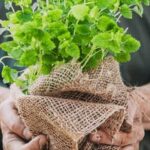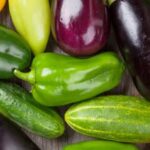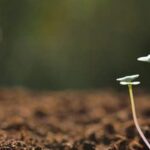Are you looking to start a successful vegetable garden in North Florida? Look no further. In this comprehensive guide, we will provide you with all the information you need to get started on your own thriving garden.
From understanding the unique climate and soil conditions of North Florida to tips for starting and maintaining your vegetable garden, this guide has got you covered. So if you’re ready to roll up your sleeves and get your hands dirty, let’s dive into the world of North Florida vegetable gardening.
North Florida is home to a diverse range of climates and soils, which can present both challenges and opportunities for vegetable gardeners. Understanding the specific characteristics of the region’s climate and soil is crucial for successfully growing a wide variety of vegetables. In this section, we will delve into the details of North Florida’s climate and soil, providing insight into what will thrive in this unique environment.
With its long growing season and mild winters, North Florida offers an ideal setting for growing a wide range of vegetables. In this guide, we’ll explore the best vegetables to grow in North Florida, taking into consideration factors such as temperature tolerance, pest resistance, and overall suitability for the local climate. Whether you’re a seasoned gardener or just getting started, you’ll find plenty of options to choose from that are well-suited to North Florida’s conditions.
Understanding the Climate and Soil in North Florida
The climate and soil in North Florida play a crucial role in the success of your vegetable garden. North Florida’s climate is characterized by hot and humid summers, mild winters, and a substantial amount of rainfall throughout the year. The region falls under USDA Hardiness Zones 8a to 9a, which means that gardeners have a longer growing season compared to other parts of the state.
In terms of soil, North Florida has predominantly sandy soils with low fertility and poor water retention. This can pose challenges for vegetable gardening as sandy soils drain quickly, leading to nutrient leaching. However, with proper soil amendments and management practices, it is possible to create a fertile growing environment for your vegetables.
When planning your vegetable garden in North Florida, it is essential to consider these climate and soil characteristics. By understanding the unique conditions of the region, you can make informed decisions about which vegetables to grow, when to plant them, and how to maintain optimal growing conditions throughout the year.
To address these considerations effectively, let’s take a closer look at some practical tips for making the most out of the climate and soil in North Florida when planning your vegetable garden.
| Climate | Soil |
|---|---|
| Hot and humid summers | Predominantly sandy soils |
| Mild winters | Low fertility |
| Substantial rainfall | Poor water retention |
Best Vegetables to Grow in North Florida
When it comes to choosing which vegetables to grow in your North Florida garden, it’s important to consider the climate and soil conditions of the region. With warm temperatures and sandy soil, certain vegetables thrive better than others in this area. Here are some of the best vegetables to grow in North Florida:
- Tomatoes: Tomatoes are a popular choice for North Florida gardens due to their versatility and ability to thrive in warm weather.
- Peppers: Bell peppers, jalapenos, and other varieties of peppers do well in the hot and sunny climate of North Florida.
- Squash: Both summer and winter squash varieties, such as zucchini and butternut squash, can be successfully grown in North Florida gardens.
- Beans: Green beans, pole beans, and bush beans are all excellent choices for North Florida vegetable gardens.
In addition to these options, leafy greens like lettuce, kale, and spinach can also be grown throughout most of the year in North Florida. These vegetables are not only suitable for the local climate but are also nutritious additions to your diet.
When planning your garden, it’s essential to consider both cool-season and warm-season vegetables. This allows you to have a continuous harvest throughout the year, taking advantage of the different growing seasons in North Florida. By selecting a variety of vegetables that are well-suited for the region’s climate and soil conditions, you can maximize your success as a North Florida vegetable gardener.
Tips for Starting Your Vegetable Garden
When starting your vegetable garden in North Florida, there are a few key tips to keep in mind to set yourself up for success. Here are some important considerations to take into account as you begin your gardening journey:
- Choose the right location: Select a spot in your yard that receives at least 6-8 hours of sunlight per day and has well-draining soil. Consider the proximity to water source and the accessibility for regular maintenance.
- Prepare the soil: North Florida’s soil tends to be sandy, so it’s important to amend it with organic matter such as compost or aged manure to improve its texture and fertility. Conduct a soil test to determine any nutrient deficiencies and adjust accordingly.
- Start with easy-to-grow vegetables: As a beginner gardener in North Florida, consider starting with vegetables that thrive in the local climate and are relatively low-maintenance. Some great options include tomatoes, peppers, squash, cucumbers, and herbs like basil and oregano.
Starting your vegetable garden in North Florida requires careful planning and consideration of factors such as location, soil preparation, and selecting the right vegetables for the climate. By following these tips, you can lay a strong foundation for a successful garden that will yield bountiful harvests throughout the growing season. Now that you’re ready to begin planting in this region with our north florida vegetable gardening guide let’s move on to maintaining your new project.
Maintaining Your Vegetable Garden in North Florida
Maintaining a vegetable garden in North Florida requires consistent effort and attention to ensure a successful harvest. From regular watering to proper fertilization, there are several key aspects to consider when maintaining your garden in this region.
Watering
North Florida is known for its hot and humid climate, which can put additional stress on vegetable plants. It’s essential to water your garden regularly, especially during the dry season. Consider investing in a soaker hose or drip irrigation system to ensure that your plants receive consistent moisture without promoting fungal diseases.
Weeding and Mulching
Weeds can quickly take over a vegetable garden if left unchecked, so it’s crucial to stay on top of weed maintenance. Regularly inspect your garden for weeds and remove them promptly. Additionally, mulching around your plants can help suppress weed growth while also retaining moisture and regulating soil temperature.
Pruning and Trellising
Certain vegetable plants, such as tomatoes and cucumbers, benefit from pruning and trellising to encourage healthy growth and maximize yields. Invest time in regularly inspecting your plants for any necessary pruning or training onto trellises or supports.
As you tend to the ongoing maintenance of your vegetable garden in North Florida, be sure to monitor for any signs of pests or diseases that may require intervention. With proper care and attention, you can enjoy a bountiful harvest of fresh vegetables from your North Florida garden.
Dealing With Common Pests and Diseases in North Florida
Identifying Common Pests
One of the most important aspects of maintaining a successful vegetable garden in North Florida is understanding and identifying common pests. Some of the most prevalent pests in this region include whiteflies, aphids, caterpillars, and nematodes. These pests can cause significant damage to your vegetables if not properly controlled. Regular inspection of your plants and quick identification of these pests is crucial for preventing an infestation.
Preventative Measures
Implementing preventative measures is key to managing common pests in your North Florida vegetable garden. One effective method is practicing crop rotation, which helps disrupt the life cycle of pests and diseases. Additionally, using row covers can provide a physical barrier to protect your plants from flying insects. Introducing beneficial insects, such as ladybugs or lacewings, can also help control pest populations naturally.
Addressing Diseases
In addition to pest management, it’s important to be aware of common diseases that can affect vegetables in North Florida. Fungal diseases like powdery mildew and blight can thrive in the humid climate of this region.
Proper spacing between plants, adequate airflow, and avoiding overhead watering can help prevent these diseases. If you notice signs of disease on your plants, it’s essential to take prompt action by either pruning affected areas or using appropriate fungicides as recommended for organic gardening practices.
By taking proactive steps to identify and address common pests and diseases in your North Florida vegetable garden, you can maintain healthy plant growth and maximize your harvest yield.
Harvesting and Storing Your Vegetables in North Florida
Once your vegetables are ready to be harvested, it’s important to handle them with care to ensure that they stay fresh and flavorful for as long as possible. In North Florida, the best time to harvest your vegetables will depend on the specific crop and the local climate.
For example, tomatoes should be harvested when they are fully ripe and have a deep color, while leafy greens like lettuce and spinach can be picked as soon as they reach a size you find satisfactory. It’s always best to consult a north florida vegetable gardening guide for specific harvest times.
After harvesting your vegetables, it’s essential to store them properly to maintain their freshness. Most vegetables should be stored in a cool, dark place with good air circulation. Some vegetables can even be stored in the refrigerator, but it’s important to keep them in perforated plastic bags or containers to prevent moisture build-up.
Another way to make the most of your harvest is by preserving your vegetables for future use. Canning, freezing, or pickling your surplus produce is a great way to enjoy home-grown veggies all year round. By using proper preservation techniques, you can lock in the nutrients and flavors of your garden harvest.
| Vegetable | Harvest Time |
|---|---|
| Tomatoes | Fully ripe with deep color |
| Lettuce and Spinach | As soon as they reach desired size |
Resources and Community Support for North Florida Vegetable Gardeners
In conclusion, the North Florida Vegetable Gardening Guide provides valuable insight into the unique climate and soil conditions of the region, as well as practical tips for growing a successful vegetable garden. With an understanding of the specific challenges and opportunities that come with gardening in North Florida, individuals can make informed decisions about which vegetables to grow and how to care for their plants.
One of the most important aspects of successful vegetable gardening in North Florida is having access to resources and community support. From local gardening clubs and extension offices to online forums and social media groups, there are numerous opportunities for gardeners to connect with others who share their passion. These resources can provide valuable information on best practices, troubleshooting common issues, and finding local suppliers for seeds and plants.
Additionally, by engaging with the larger community of North Florida vegetable gardeners, individuals can benefit from shared experiences and collective wisdom. This sense of camaraderie not only enriches the gardening experience but also fosters a spirit of collaboration and mutual support. Ultimately, by tapping into these resources and community connections, aspiring vegetable gardeners in North Florida can enhance their skills and knowledge to cultivate thriving gardens year after year.
Frequently Asked Questions
When Should I Plant My Garden in North Florida?
In North Florida, it’s best to plant your garden in late winter or early spring, around February or March. This timing allows the plants to establish themselves before the hot summer months.
When Should I Start a Vegetable Garden in Florida?
If you’re planning to start a vegetable garden in Florida, it’s best to start in the fall, typically around October. This timing allows the vegetables to grow and establish before the cooler winter temperatures.
What Vegetables Don’t Grow Well in Florida?
Some vegetables don’t grow well in Florida due to the heat and humidity. These include cool-weather crops like cauliflowers, Brussels sprouts, and some varieties of lettuce. Additionally, root vegetables such as turnips and radishes may struggle in Florida’s sandy soil and warm climate.

If you’re looking to get into vegetable gardening, or are just looking for some tips on how to make your current garden better, then you’ve come to the right place! My name is Ethel and I have been gardening for years. In this blog, I’m going to share with you some of my best tips on how to create a successful vegetable garden.





